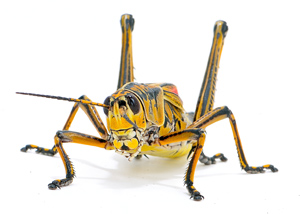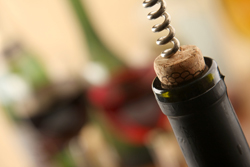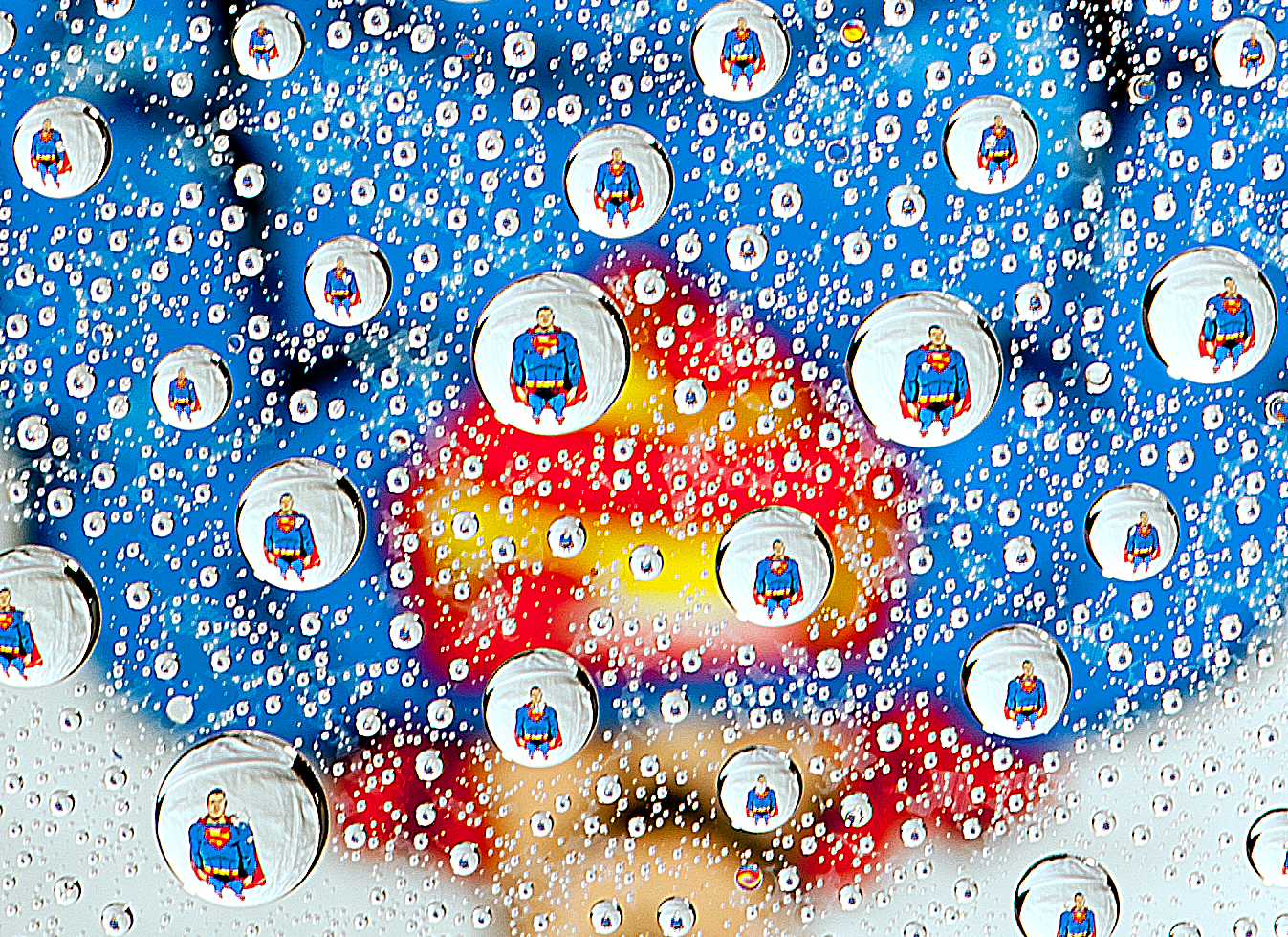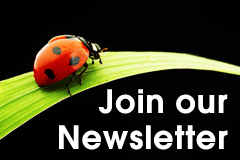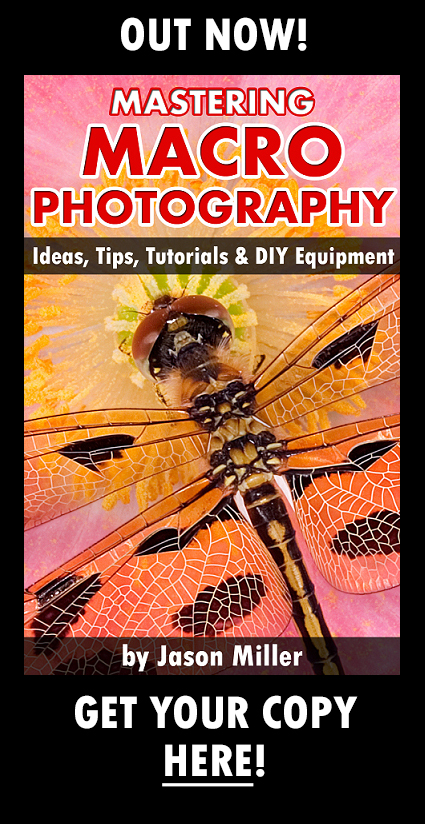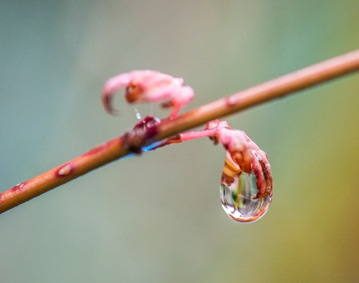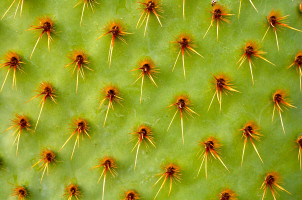Macro Photography – Interview with Steven Randolph
Steven Randolph joins us today to talk about macro photography. We recently shared his work with everyone on our Facebook page and many of you commented that you loved his work. So we decided to interview him to ask him all the tough questions about macro photography! Before we get started, thank you to all of our fans who submitted a question to this interview. We have tried our best to include every single question and hopefully you will enjoy reading the responses from Steven. Happy learning!
1) How long have you been shooting macro?
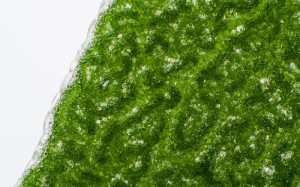
Leaf of a common weed, purslane, up close. 5X magnification with a Canon 50mm 1.8
Steven: I got my first dSLR in 2009, and shortly after began experimenting with ways I could do macro photography with it with out a heavy investment in macro lenses.
2) What made you interested in macro photography?
Steven: I have always been interested in arachnids and insects since I was a kid. So once I had a camera it was something that came automatically. Recently I have also been experimenting with some high magnification plant photography as well, as plants are another interest of mine.
3) What camera gear do you shoot with?
Steven: My first camera was a T1i and now I also have a 60d. For lenses, I use what I can get my hands on. I have used the 18-55mm kit lens reversed, Canon 50mm 1.8 on bellows, an old 1970s Pentax lens I got for free that I reverse, and recently some old Nikon 50mm 1.4 lenses I got at a garage sale. I also recently acquired 4x and 10x microscope objectives. I have an old Canon FD bellows that I have adapted for EF and m42 mount, which was only 20 dollars at a local antique store. For lighting gear I have a couple small flashes I use for handheld stuff and a low range monolight for stacking.
So no dedicated macro lenses. Not a very heavy investment in gear either. The DIY aspect of adapting one piece of gear into another has always been enjoyable for me.

(Above) 60d with a Canon FD auto bellows adapted to use EF mount lenses. The 50mm 1.8, ‘nifty fifty’ was used to take the image of a June beetle, at around 3x magnification. Stepping focus was done by using the bellows.

(Above) Canon T1i with a reverse mounted 18-55mm kit lens. Not known as the best lens on the block, the kit lens still works pretty well outside of its intended use. Focus stepping was accomplished using the lens’s focus ring. The portrait of the spider was taken close to 4.5x magnification
 (Above) Canon T1i with a reverse mounted 50mm Pentax lens from the 1970’s. The lens had a bit too much chromatic aberration for my taste, but produced a nice image of a long-legged fly. Steeping focus was accomplished with the bellows.
(Above) Canon T1i with a reverse mounted 50mm Pentax lens from the 1970’s. The lens had a bit too much chromatic aberration for my taste, but produced a nice image of a long-legged fly. Steeping focus was accomplished with the bellows.

(Above) 60d with a Nikon 4x microscope objective mounted to Cannon FD bellows. Stepping for the focus stack is done using a home made wooden rail. The final image was a stack of 43 images with a magnification somewhere around 5-6x.
3A) You briefly touched on Microscope Objectives. Are you able to tell us a bit more about what they are and whether you connect them directly to your camera somehow?
Steven: Sure. A microscope objective is essentially just the ‘lens’ portion of the microscope. There are several ways one can use it with a camera. One would obviously be to attach your camera up to a microscope that has a trinocular head. Often times this is how people take photomicrographs, and this method offers about the same magnification as the microscope is producing through its eye piece. Alternately you can attach just the microscope objective to the camera. First you need to know if your microscope objective is finite or infinite. If it is infinite, you need to use a tube lens with it. Either in the form of an actual tube lens design for it, or by attaching it to a camera lens of a suitable focal length focused at infinity. If it is finite, then you just attach it to the camera with extension tubes or a bellows. So far the object set up i have been using is the simplest, a finite set up attached directly to the camera.
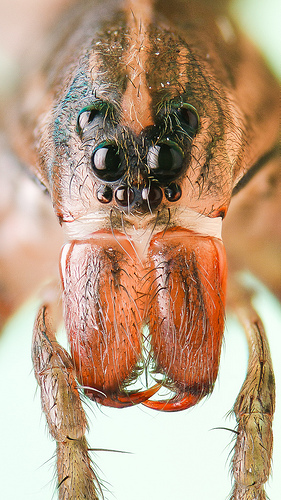
This image was taken with the 18-55mm kit lens reversed. Sometimes disparaged for its poor quality, the lens can still produce nice images when used with care.
4) What advice about gear would you give someone just starting out in macro photography?
Steven: Know how you plan on lighting your photos. Make sure your light is soft and diffuse. That will make the biggest difference.
For lenses, there are a lot of ways to achieve the same goal and each has pros and cons. If I wanted to take a photograph a 5x magnification, two of the options would be a reversed kit lens, or an MP-E 65. Reversing the kit lens costs 10 dollars and can get the image pretty well, but lacks aperture control when reversed. The MP-E 65 costs about 900 and will give you a sharper image and has aperture control. You just have to decide what you need and what will get you there.
5) In macro photography, it is quite difficult to get your subject completely in focus as you get closer. Is there a specific technique that you use to get as much of the subject in focus as possible?
Steven: There are two options. The first is to stop down the lens to a smaller aperture. The problem is that once the effective aperture gets too small, the effective resolution of of the image will gradually drop due to diffraction. For example on my 60d, once the effective aperture surpasses F11, the resulting image will no longer have all the detail that an 18mp image is capable of capturing. An 18mp image captured at F32 on the 60d, would in theory would show the same amount of detail as a 1mp image. In practice, diffraction limited images respond very well to sharpening .The visual loss of resolution is there, but not quite as dramatic as it sounds.
 So if we want as high of a resolution image as possible, we want to have a wider aperture. Unfortunately a wider aperture takes most of our subject out of focus.
So if we want as high of a resolution image as possible, we want to have a wider aperture. Unfortunately a wider aperture takes most of our subject out of focus.
Our second option to increase our depth of field is to focus stack. To do this we take a series of images each with a different plane of focus, then assemble all the images into a single photograph with an enhanced depth of field. This allows us to get a higher resolution image and have a large depth of field.
6) Do people require any special tools or software to focus stack? If yes, what program would you recommend for beginners?
Steven: The first thing you need is a way to move the plane of focus. Whether that is with your lenses internal focusing or a dedicated focus rail. The camera must be in a fixed position. The subject and framing needs to stay movement free. You also want to try to reduce visible vibrations in the photograph, using flash tends to do this quite well.
There are lots of different softwares that can focus stack. Photoshop has the capability to focus stack, but does not work very well for more than a couple images and tends to take a long time to process. It is best to use a piece of software dedicated to the task. Zerene Stacker and Helicon Focus are two commercial options. CombineZP is a free and open source option. I use Zerene Stacker, as it has the very handy ability to manually retouch images for when the software doesn’t get it exactly right. It can also create synthetic-stereo or rocking images, which is always fun.
7) Is the focus stacking technique more suited to specific subjects?
Steven: It can be used for any subject that does not move much. I have seen it used for landscape photography, product photography, and of course macro photography.
8) Can focus stacking only be used on subjects in an indoor macro photography studio/lab? Or is it possible to use the focus stack technique on subjects in an outdoor setting?
Steven: Outdoor and natural light focus stacking is certainly possible. It does have its own challenges of course. You need to start early morning and in a cooler climate so that the subjects metabolism is low and they are not moving. You also need to account for any wind and plant movement. Clamping plant stems can be very helpful for this.
I do not get a chance to do much focus stacking outdoors since I am in a warmer climate. Things tend to move quite quickly so I am more limited to handheld and flash work outdoors. Though every now and then I am able to snag a few handheld stacks.
9) What do you look for when you are focus stacking? Is there such thing as a great focus stacked photo? And does the head of your subject always have to come first? 🙂
Steven: The first thing I look for, in not just focus stacks but all photographs of animals, is that the eyes are in focus when possible. Its almost always where we look first, so introduce the viewer to your photo with the eyes in perfect focus.
Most of the time, I try to make sure the camera is at eye-level with the subject when focus stacking. It helps create a more personal feel when the perspective is coming from the same level that the subject would be at.
10) Do you usually make any further edits / post-processing onto your photos? If so, what software do you use?
Steven: I shoot in RAW then edit in Lightroom. Mostly I just adjust for sharpness and color. After a stack I will crop the photo to make sure it is composed how I want it.
11) If we were to enter your mind, right before you take your shot, what do you think we would see? Is there a particular process that you go through each time before you press the shutter button?
Steven: I am not sure. Perhaps some sort of disturbing vision of me swimming in a pool filled with tacos?
Most of the time I am experimenting with something new. Almost every photograph is a new lens set up, lighting set up, way to step focus, or something else. I enjoy all the possibilities for ways to take an image. So I don’t think I am very set in my ways right now.
12) What is your advice for people who are starting up in macro photography?
Steven: Focus on the subjects you like and always try to do better than your last image. I tend to only be good at the first one, but the second one isn’t a bad goal to have.
13) How important do you think composition is in macro photography?
Steven: Quite important. It can be very hard some times to get the framing you want in high magnification images. Never be afraid to crop an image. Get rid of stray bits around the images’s border, put the subject in an interesting place. Sometimes less is more. You don’t need to keep 100% of the image the camera captured. Just keep the part of the image that you wanted to have captured.
14) To close off the interview, we have a game that we play on the Seeing in Macro Facebook page called ‘The Dilemma’. It is a hypothetical game where the dilemma is that you only have one shot left on your camera. You are faced with a number of unique subjects to photograph but you can only choose one. Imagine yourself with that dilemma now and tell us which subject (below) you will choose to photograph and why? We know you are a huge spider fan, so here are three photos that our fans have shared with us in the past for you to choose from –



Steven: The first images is a very nice image of a wolf spider with spider-lings being lugged around. The third image is a nice close up of another wolf spider. But I would have to go with the second image of the jumping spider on the flower. Great contrast, highkey, and one of my favorite types of spiders, it is the clear choice for me.
———————————————
We hope that you found the interview with Steven to be an eye opener into the world of macro photography. Many thanks to Steven for taking the time out to respond to all our questions about his macro photography journey, camera gear and techniques. We will definitely be following Steven in the future to see where his love for macro photography takes him! Please join me in thanking Steven by LIKING and SHARING this interview!
To keep in touch with Steven and to be updated with all of Steven’s new photos and postings, you can follow him over at:
1) Flickr (http://www.flickr.
2) Twitter (https://twitter.com/
If you are interested to read more about some of the topics that were discussed within this interview, you may be interested in reading the following articles here –
- Reversing Lens for Macro Photography
- Using Bellows for Macro Photography
- What is Focus Stacking?
- Focus Stacking Tutorial
- How to Compose your Photos Like a Pro



